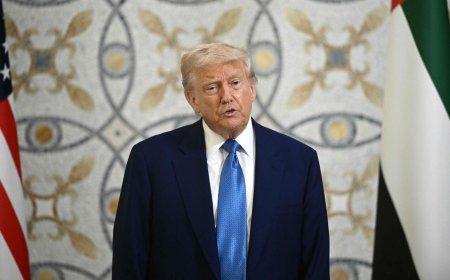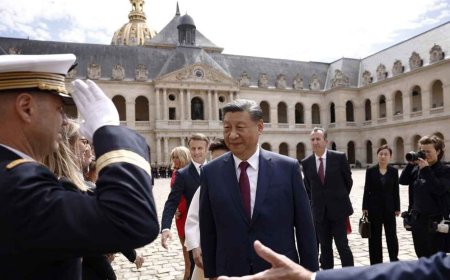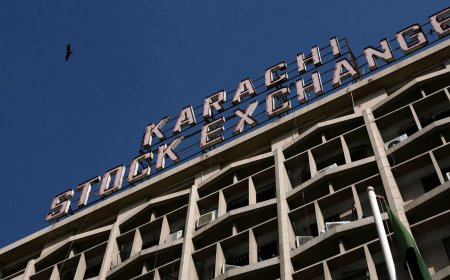Trump Trade War Fuels Use of Currency Options as Hedge in Europe
European firms and investors are ramping up the use of currency options as Trump’s renewed trade war threats spark volatility in FX markets. Learn more about the trends, strategies, and outlook.

European Firms and Investors Turn to Currency Derivatives Amid Renewed Trade Tensions
July 3, 2025 | London – The resurgence of trade tensions between the United States and China, reignited by former President Donald Trump's renewed threats of tariff hikes, is rippling through global financial markets—and Europe is feeling the heat. As the geopolitical landscape once again shifts toward protectionism, European businesses and asset managers are turning increasingly to currency options to shield themselves from the volatility surging across foreign exchange (FX) markets.
Trump’s aggressive rhetoric on trade, paired with pledges to impose new tariffs if re-elected, has led to heightened concerns over global economic stability. With the euro, pound, and other major currencies whipsawing amid this uncertainty, currency options—a financial derivative used to hedge against adverse exchange rate movements—are seeing a resurgence in demand across the continent.
Surge in Currency Option Volumes
According to data from the European Securities and Markets Authority (ESMA), currency option trading volumes rose by nearly 28% year-on-year in Q2 2025. The sharp increase is largely attributed to multinational corporations and institutional investors bracing for FX volatility linked to renewed trade frictions.
“Trump’s trade war posturing is a return to the uncertainty that plagued global trade in 2018 and 2019,” said Anya Reitmann, Head of Currency Strategy at Frankfurt-based Bärenberg Asset Management. “European firms, especially those with large U.S. and China exposure, are proactively hedging against sharp currency swings.”
The euro-dollar and euro-yuan option markets have seen particular activity. Traders note a noticeable rise in euro put options—used to guard against a euro depreciation—as the U.S. dollar has strengthened amid safe-haven flows and expectations of a more hawkish U.S. trade policy under a potential second Trump administration.
Corporate Hedging Takes Center Stage
For European exporters like Germany’s industrial giants and France’s luxury conglomerates, currency hedging is more than a tactical move—it’s a survival tool.
“With trade tensions back on the radar, companies don’t want to be caught off guard like in the last cycle,” said Jean-Claude Martin, Chief Risk Officer at Schneider Electric. “We’ve increased our dollar hedge ratio from 60% to 85% to mitigate potential revenue hits from currency fluctuations.”
Pharmaceuticals, automotive, and luxury sectors—which derive a significant share of earnings from dollar-denominated markets—are leading the pack in increasing currency derivative exposure.
Even small- and medium-sized enterprises (SMEs), traditionally slower to adopt complex FX strategies, are engaging more with currency advisors and banks offering hedging solutions. Several European banks report double-digit growth in corporate client inquiries regarding currency options over the past two months.
Institutional Investors Reassess Portfolio Risk
Institutional investors managing cross-border portfolios are also adjusting FX hedging strategies in light of the renewed trade war fears. European pension funds and mutual funds with large U.S. equity or bond holdings are opting for euro call/dollar put spreads to mitigate downside risks.
“Trade policy risk is once again a macro variable you can’t ignore,” said Luca Venturi, Senior Portfolio Manager at Intesa Sanpaolo Investment Management. “Even a 3–5% move in currency over a quarter can erode unhedged international returns.”
Options with expirations between three to six months are seeing the highest interest, reflecting investor expectations that the most acute risks will play out around the U.S. presidential election period in November 2025.
Central Banks, Geopolitics, and FX Sensitivity
Market participants are also watching the European Central Bank (ECB) and the U.S. Federal Reserve for diverging monetary policy signals, which could further amplify FX moves. With the ECB on a likely pause and the Fed possibly tightening if inflation rises amid trade constraints, interest rate differentials could widen, affecting carry trades and demand for euro-based assets.
Geopolitical analysts point to Trump’s 2025 campaign rhetoric as a major market-moving variable. His threats to impose tariffs on Chinese imports, review existing trade deals with Europe, and bring back “America First” policies have rekindled fears of retaliatory actions from other nations—raising the specter of a repeat of the 2018–2019 trade standoff.
Outlook: Caution Likely to Persist
While it remains uncertain whether Trump’s campaign will translate into concrete trade measures, the probability of a less cooperative global trade environment has led to a structural shift in how European firms and investors manage FX risk.
“Currency options are no longer a niche or reactionary product—they’re becoming a staple in treasury management,” said Eva Larsen, Managing Director, FX Risk Solutions at BNP Paribas Europe. “We expect demand to remain strong through the U.S. election cycle and potentially beyond.”
Investor takeaway: Currency hedging may offer a buffer against near-term shocks, but markets are bracing for deeper macro shifts if trade hostilities escalate. European players, once reactive to geopolitical headlines, now appear to be adopting a more proactive, strategic stance in navigating global uncertainty.
What's Your Reaction?
 Like
0
Like
0
 Dislike
0
Dislike
0
 Love
0
Love
0
 Funny
0
Funny
0
 Angry
0
Angry
0
 Sad
0
Sad
0
 Wow
0
Wow
0













































































